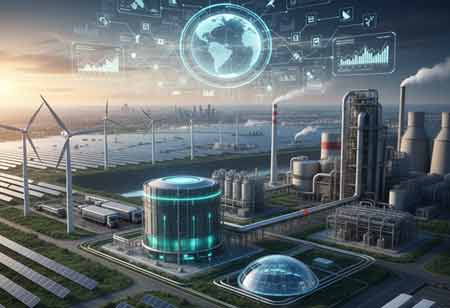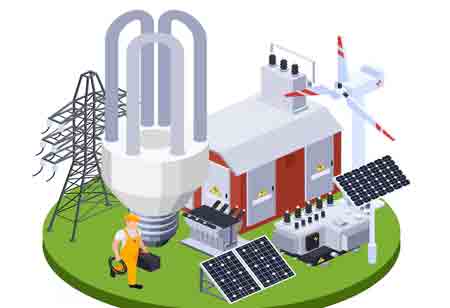CLOSE
Specials
I agree We use cookies on this website to enhance your user experience. By clicking any link on this page you are giving your consent for us to set cookies. More info
Be first to read the latest tech news, Industry Leader's Insights, and CIO interviews of medium and large enterprises exclusively from Energy Tech Review
Thank you for Subscribing
Building a Sustainable Future: Energy Sovereignty in Canada
Canada is evolving its energy landscape through energy sovereignty, leveraging technology for decentralized systems, fostering Indigenous initiatives, and enhancing infrastructure to ensure a resilient, sustainable future.

By
Energy Tech Review | Monday, November 10, 2025
Stay ahead of the industry with exclusive feature stories on the top companies, expert insights and the latest news delivered straight to your inbox. Subscribe today.
Fremont, CA: Canada is at a pivotal point in its energy evolution due to its large and varied territory, wealth of natural resources, and increasing dedication to decarbonization. Particularly among Indigenous groups, the idea of "energy sovereignty"—the right of communities and peoples to manage their own energy production, distribution, and consumption—is gaining support. This trend presents a potent route for constructing a more secure, equitable, and resilient national energy infrastructure when paired with the swift progress of technology.
Technology as an Enabler of Sovereignty
Technology is central to achieving energy sovereignty and building resilient infrastructure in a country as vast and diverse as Canada. The transition from a traditional, centralized grid to a decentralized and digitized energy system is essential for ensuring long-term stability, sustainability, and adaptability. Modern advancements are driving the development of decentralized energy systems, where power is generated closer to the point of consumption through residential solar panels, small-scale wind turbines, and community-owned micro-grids. These localized systems strengthen resilience by reducing dependence on large-scale infrastructure and mitigating the impact of widespread outages. Complementing this shift, the digitization of the energy sector is reshaping how electricity is managed. Smart grids, powered by sensors, real-time data, and advanced analytics, enable optimized energy flow, predictive maintenance, and seamless integration of renewable sources, ensuring a flexible and robust national grid. At the same time, energy storage technologies such as advanced batteries and pumped hydro are addressing the intermittency of renewables by storing surplus power during peak generation and releasing it when demand is high, thereby ensuring reliability. Data-driven decision-making, powered by AI and machine learning, enables utilities to analyze vast datasets, enhance asset performance, and implement predictive maintenance strategies. For communities, these innovations translate into greater efficiency, cost savings, and a reduced environmental footprint, paving the way for a cleaner and more secure energy future.
The Path to a Resilient Future
Building a resilient national infrastructure in Canada demands a coordinated and collaborative approach across all levels of government, industry, and communities. Central to this effort is the establishment of a stable and supportive policy and regulatory framework that encourages investment in clean energy infrastructure, with particular emphasis on advancing Indigenous and community-led initiatives. Strengthening interprovincial connectivity through expanded and modernized electricity transmission lines is equally critical, as it enables more efficient power sharing, enhances grid stability, and reduces dependence on fossil fuels. Collaboration among federal, provincial, territorial, and Indigenous governments, as well as private sector partners, is essential for fostering information exchange, sharing best practices, and effectively managing risks across the interconnected energy system. As the grid becomes increasingly digitized, implementing robust cybersecurity measures is vital to safeguarding critical infrastructure and maintaining public trust in the reliability and security of Canada’s energy future.
By embracing energy sovereignty and leveraging cutting-edge technology, Canada can move beyond its traditional role as a resource exporter and become a global leader in clean energy and resilient infrastructure. This shift is not merely an economic opportunity; it is a nation-building exercise that will foster a more secure, sustainable, and equitable future for all Canadians.

Copyright © 2025 Energy Tech Review. All rights reserved






